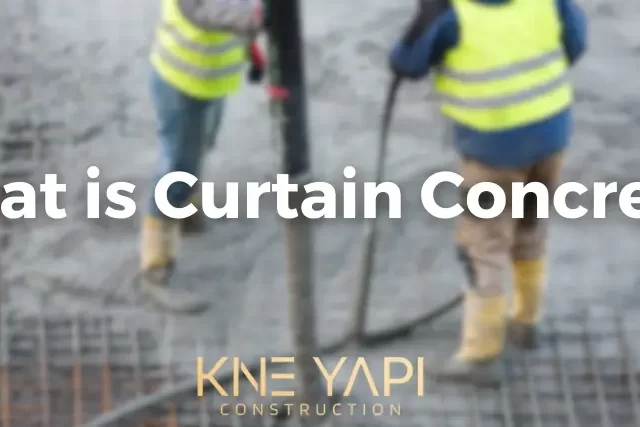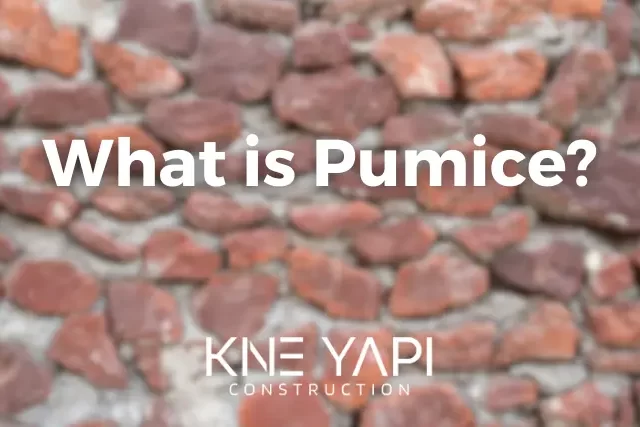
The types of columns vary depending on the material, shape, and purpose. Reinforced concrete columns, steel columns, and wooden columns are among the most commonly used types. Additionally, there are column types with square, rectangular, or circular cross-sections.
Reinforced concrete columns are often preferred for large buildings, while steel columns are used more in industrial buildings or structures with large openings. Wooden columns are typically chosen for smaller-scale structures or for decorative purposes.
Each type of column may be more suitable for specific applications and requirements. For example, reinforced concrete columns are often preferred due to their capacity to bear heavy loads, while steel columns can be selected for their lightweight and ease of assembly. Wooden columns, on the other hand, may be the best choice in some cases due to their aesthetic appearance and natural material properties.
For information about real estate in Alanya, you can visit: Cyprus Real Estate
Elements Under Axial Load in Columns
In response to the question, “What is a column?” the simplest answer is that columns are vertical structural elements that typically work under axial load and support the structure. Columns bear the load from the foundation to the roof, making them essential components.
The proper design and construction of elements under axial load are vital for the safety and durability of any structure. Improperly designed or constructed columns can cause significant damage to a building and even lead to its collapse.
The design and construction of elements under axial load are generally the responsibility of engineers. These elements must be designed to carry the required loads to ensure structural integrity. Additionally, the material and dimensions of these elements are crucial, as they directly affect the column’s strength and performance.
Elements under axial load form the foundation of any structure. Therefore, the correct design and construction of these elements are of paramount importance.
Types and Applications of Columns
- Short Columns: These columns usually carry axial loads and have a height-to-width ratio of less than 12. Short columns’ strength depends on the material’s compressive strength and is typically made of concrete.
- Long Columns: Columns with a height-to-width ratio greater than 12 are called long columns. The strength of long columns depends on both the material’s compressive strength and tensile strength.
- Tied Columns: Ties are essential reinforcing elements used to shape concrete. Tied columns are frequently used in earthquake-prone areas because ties provide flexibility to concrete, reducing potential damage during earthquakes.
- Spiral Columns: Spirals are made of steel bars and are inserted into reinforced concrete columns. Spiral columns offer higher load-bearing capacity and durability.
Each of these types can be more suitable for different structural requirements and applications. The choice of the column type depends on the dimensions of the structure, the materials used, and the geographical location of the structure.
What is a Tied Column?
Tied columns are often preferred in earthquake-prone regions because they can prevent buildings from collapsing during seismic events. Additionally, tied columns reduce the risk of collapse even under extreme loads.
Another advantage of using ties is that they provide more space for concrete to flow. This ensures a more uniform distribution of concrete and equal pressure on every point, enhancing the column’s overall durability and lifespan.
In summary, the answer to the question “What is a tied column?” is that it is a type of column reinforced with ties to prevent cracking and enhance its load-bearing capacity. It contributes to the overall durability and performance of a structure and is commonly used in the construction industry.
Tied columns find applications in multi-story buildings, bridges, viaducts, and similar structures. These types of structures, due to their weight and the loads they bear, require the durability provided by tied columns.
What is a Spiral Column?
Proper placement of reinforcement within the concrete and the use of spirals are essential for ensuring the structural integrity of the column. Spirals enable the steel reinforcement to be securely embedded in the concrete.
Spiral columns are often used in tall buildings where the weight and pressure on columns are substantial. In such cases, the role of spiral reinforcement becomes critical. Spiral columns can withstand higher loads and help prevent potential damage.
In summary, spiral columns are a vital component of structural systems and are widely used in structural engineering. Using this type of column can enhance the overall strength and reliability of a structure.
Column Cross-Section Types
Polygonal cross-section columns are another option, although their design may be more complex. Despite the potential complexity, polygonal columns may perform better in certain situations.
Each column cross-section type has its unique advantages and disadvantages. For instance, when choosing between rectangular and square cross-section columns, it should be considered that rectangular columns tend to have a higher load-bearing capacity. However, square columns might be more aesthetically appealing.
The selection of column cross-section types depends on the project’s requirements and design objectives. Therefore, when deciding which type of column to use in a construction project, numerous factors need to be taken into account.
Types of Reinforcement
Reinforcement types are often classified based on their applications. Among the most commonly used reinforcement types are longitudinal reinforcement, stirrups or tie reinforcement, and spiral reinforcement.
Longitudinal reinforcement is typically made of steel bars and is placed along the length of columns. It is often used to protect structures from vertical loads. Stirrups or tie reinforcement is usually wrapped around columns to provide lateral support. Spiral reinforcement, on the other hand, is more common in circular columns.
Each reinforcement type serves a different purpose and is often used together in construction projects. Therefore, understanding when and where to use each type of reinforcement is crucial for a successful construction project.
Longitudinal Reinforcement
Longitudinal reinforcement is an integral component of reinforced concrete columns, enhancing their load-bearing capacity, durability, and resistance to seismic events. Therefore, when applied correctly, longitudinal reinforcement significantly contributes to the overall safety and performance of structures.
What is Tie or Stirrup Reinforcement?
One of the advantages of using ties or stirrups is their ability to increase a structure’s resistance to seismic events. During an earthquake, one of the main reasons for building collapse is the failure of columns. The use of ties or stirrups helps columns withstand greater loads and reduces the risk of collapse.
Another advantage of tie or stirrup reinforcement is that it provides more space for the concrete to flow. This results in a more uniform distribution of concrete and equal pressure on every point, enhancing the overall durability and lifespan of the column.
In summary, tie or stirrup reinforcement is a crucial component in construction that prevents concrete from cracking and improves its load-bearing capacity. It plays a vital role in ensuring the safety and longevity of structures in the construction industry.
What is Hoop Reinforcement (Spiral)?
Spiral columns are often employed in tall buildings where the weight and pressure on the columns are substantial. In such cases, the role of spiral reinforcement becomes indispensable. Spiral columns can withstand higher loads and help prevent potential damage.
In summary, spiral reinforcement is a vital component in structural engineering, particularly in the construction of columns. Its usage can significantly enhance the overall strength and reliability of a structure.





Leave a Reply